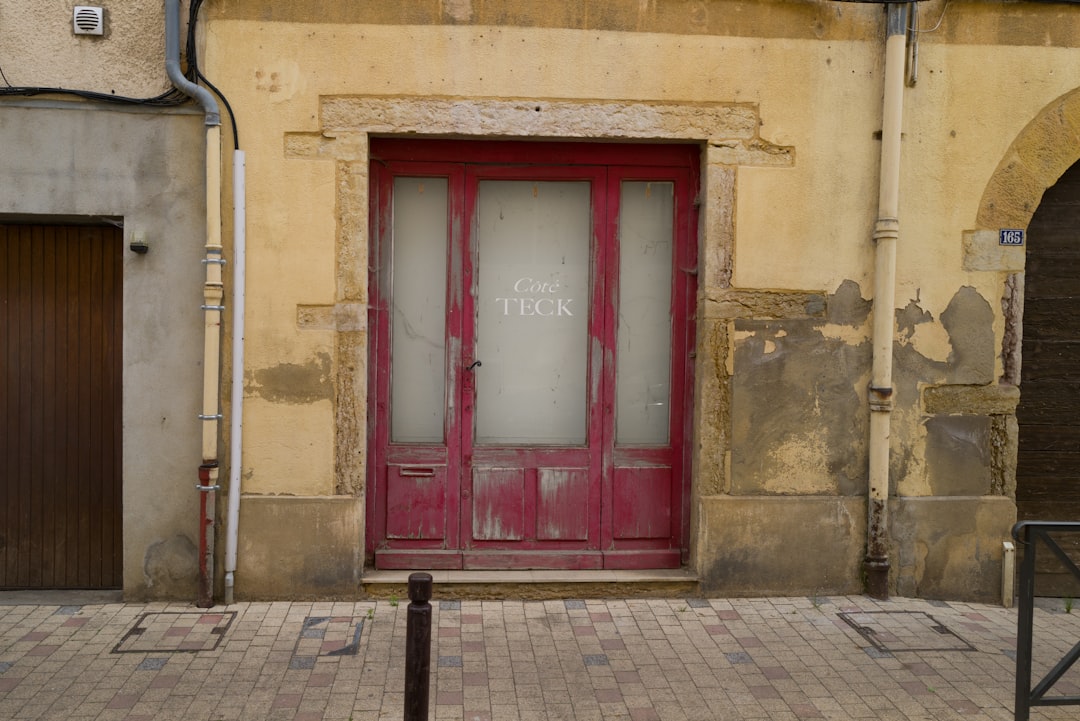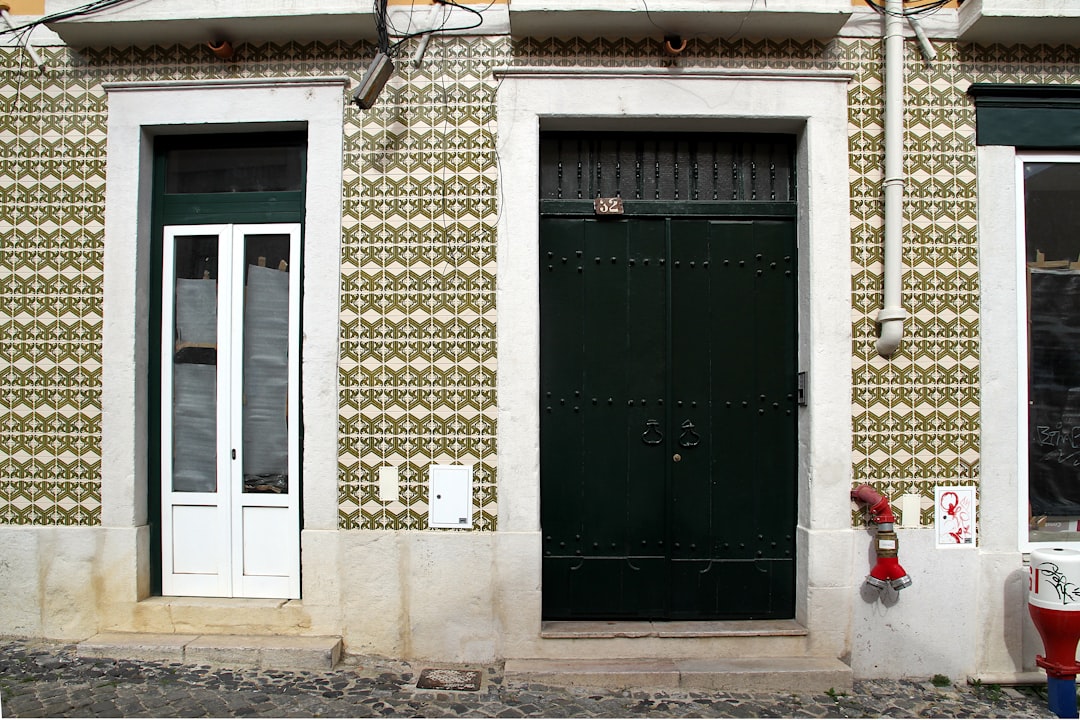

Engage prospects with a scan and streamline customer engagement with FREE QR code marketing tools by Sona – no strings attached!
Create a Free QR CodeFree consultation

No commitment

Engage prospects with a scan and streamline customer engagement with FREE QR code marketing tools by Sona – no strings attached!
Create a Free QR CodeFree consultation

No commitment
French door installation services often wrestle with the frustration of missed sales opportunities, whether from brochures gathering dust at exhibitions, showroom visitors leaving with questions unasked, or form submissions lost in the shuffle of manual processes. High-value prospects are easily overlooked when interest goes untracked or when interactions remain purely offline, limiting visibility into which marketing actions drive actual demand and revenue.
The shift toward blended physical and digital customer journeys makes it essential for service providers to bridge the gap between in-person engagement and actionable sales follow-up. Modern QR codes in marketing now empower French door installation specialists to connect every point of contact, including a handwritten estimate, showroom display, or post-installation guide, directly to their digital lead capture and nurturing systems. This means fewer lost prospects, real-time lead scoring, and the ability to act on intent long before a competitor does.
This guide explores how French door installation service providers can strategically deploy QR codes to replace manual lead capture, surface hidden demand, and generate qualified prospects. You will find actionable steps supported by real-world pain points and solution strategies, illustrating how to use smart QR technology to increase inquiries, collect customer feedback, and drive measurable growth through every customer interaction.

Many installation providers find potential business slipping through the cracks when customers interact with print materials or visit showrooms but never reach out directly. Relying on paper forms and static displays means that a substantial share of high-intent visitors go untracked and unpursued, weakening your sales pipeline and letting hot leads cool off fast. QR codes create instant, low-friction pathways from discovery to action, helping you capture demand at the moment of intent, not days later.
QR codes provide a simple, frictionless transition from physical to digital, enabling homeowners to act at the moment of interest, whether requesting a quote, scheduling an appointment, or downloading care tips. When paired with a modern CRM and automated follow-up, QR campaigns turn every brochure, sign, or service vehicle into a data-driven entry point that feeds your sales process. Here is how QR codes help turn missed opportunities into actionable sales leads:
Example: Instead of relying on brochures that rarely convert, placing a QR code on every estimate form allows prospects to request a callback directly while their interest is high. The scan triggers an appointment scheduling page and captures contact details immediately, making it easier to secure high-value leads before they turn to a competitor.

Visibility into which prospects are interacting with your business offline is often poor. Property owners review brochures, in-home service cards, or door hangers but rarely reveal their identity or level of intent until much later. This hidden engagement delays outreach and forces marketers to rely on guesswork when evaluating campaign performance.
With QR codes, every piece of physical marketing becomes a gateway to digital tracking and engagement. By transforming print touchpoints into measurable digital actions, QR codes reveal previously anonymous interest and allow real-time follow-up. This greater visibility enables you to prioritize high-intent prospects, ensure faster response times, and invest more confidently in the marketing channels that demonstrate measurable conversion. For a real-world example, see this dynamic QR page.

Providers often struggle to collect accurate customer data and encourage repeat interaction due to the cumbersome nature of traditional feedback forms and reliance on customers to take the first step. As the market becomes more competitive, tech-savvy customers expect instant, seamless connections between their physical and digital experiences. The right QR format helps meet those expectations.
Different QR formats support different outcomes. You can mix and match them across placements to create a cohesive conversion path. Dynamic QR codes are especially useful in this vertical since promotions, financing rates, and seasonal galleries change frequently.
Dynamic codes, in particular, allow businesses to adapt messaging post-launch, learn from scan performance, and ensure every campaign asset works harder. With a platform like Sona QR, you can create and manage all of the above in one place and update destinations in seconds.

French door installers often invest in print materials and job site signage but struggle to connect those impressions to new business. Missed engagement signals mean neighbors or passersby who admire your work never convert to pipeline value. Similarly, direct mail responses can be hard to measure or attribute without a link into your digital systems.
To overcome this, QR placements should concentrate where buying intent is highest and where the next step is clear. Treat each placement as a conversion point and make sure the destination matches the moment. For example, a job site sign should go to a gallery of the exact product line seen on that home, not a generic homepage.
Strategically deployed QR assets ensure you capture demand as it arises at the moment when interest peaks and the window for follow-up is shortest. They also reveal which neighborhoods and placements are most productive, guiding smarter budgeting and route planning for canvassing or service calls.

Missed lead capture at key moments in the customer lifecycle can be the difference between winning and losing out to a competitor. QR codes allow you to turn routine paperwork, installation checklists, and feedback requests into high-converting, attributable interactions that continue to inform your pipeline and nurture streams.
Focus on a handful of use cases that align with your core goals. If your priority is quote volume, prioritize scan-to-estimate tactics. If your priority is reputation, focus on post-install review capture. Over time, expand your mix to cover awareness, consideration, purchase, and ownership stages.
These use cases improve lead capture and unlock ongoing engagement. Each scan becomes a signal of intent or readiness for upsell, arriving right when the customer is considering their next move. With dynamic QR codes, you can adjust destinations based on seasonality, inventory, or promotional windows without reprinting collateral.
Capturing high-value prospects is challenging when their engagement is invisible or when CRM data remains limited to those who fill out long forms. Without the right segmentation, marketing spend is wasted on less qualified leads. QR codes help you automatically group contacts based on real behaviors and intent, which makes follow-up feel helpful rather than intrusive.
Each unique scan event can be tied to specific stages in the buying journey, such as early research, ready to buy, or post-installation maintenance. By attributing scans to their source, whether a trade show, job site sign, showroom placard, or install follow-up, you can trigger timely, relevant retargeting sequences that match context. This approach ensures your team spends time on the hottest opportunities and that your campaigns nurture everyone else with the right cadence. For tactical steps, use Sona’s Playbook on intent-driven retargeting.
Industry-specific audience distinctions help guide next steps. For example, differentiate new build homeowners exploring French doors for the first time from renovators replacing aging patio doors. Treat trade partners such as property managers or builders as a separate segment with distinct offers and service-level commitments.
A siloed approach to marketing, where mailers, social ads, and in-person touchpoints remain disconnected, causes data loss and makes impact difficult to measure. French door installation services can use QR codes as a unifying layer across channels so every tactic supports the same conversion goals and reporting framework.
QR codes fold seamlessly into existing channels and offer a common measurement currency. A single look at your scan dashboard reveals which media types pull their weight. You can respond in real time by rotating creative, shifting spend, or swapping landing pages if an offer is not converting. Learn more about offline attribution to connect these touchpoints.
QR codes serve as the offline onramp to your digital marketing engine. They also unlock a new layer of data collection across channels that were once difficult to measure. With a centralized platform like Sona QR, you can manage all your codes, monitor performance by channel, and sync scan data with your CRM and ad platforms for end-to-end attribution.
Start by defining the business outcome you want to improve. For many French door installers, the most costly gaps are low quote conversion at home shows, untracked neighborhood interest near active job sites, or poor review capture after installations. Choose one use case that aligns to a measurable target so you can judge success quickly and build momentum.
Once the use case is set, it is easier to plan the code type, destination, and offers that will drive the behavior you want.
Your code type should fit the goal and the level of agility you need. Static codes work for fixed destinations that will not change, while dynamic codes give you the flexibility to adjust after printing and to capture analytics.
For most lead-generation placements in this industry, dynamic QR codes will be the better choice, since offers, financing, and inventory shift throughout the year.
Design impacts scan rates and trust. Your code should look intentional and on-brand so homeowners feel confident scanning it. Test across devices and environments to prevent avoidable drop-offs.
A short prelaunch test will reveal friction points such as slow load times or confusing forms. Fixing these can double or triple conversion.
Place QR assets where your highest-intent engagements occur so you meet interested prospects at the exact moment they want to act. Make sure the destination aligns with the placement context so the experience feels natural.
Roll out gradually if needed. Start with two or three high-impact placements to build a performance baseline, then expand to additional surfaces and channels.
Your first week of data will show obvious opportunities to improve. Treat each code and destination like an experiment and iterate with intention. The goal is to increase conversion, lower response time, and focus spend on the best-performing assets.
Ongoing optimization ensures your QR program matures from a set of links into a performance engine that increasingly pays for itself. Start creating QR codes for free at Sona QR.
One of the most persistent challenges in this industry is connecting offline interactions to real sales outcomes. Lacking visibility into which campaigns produce high-value opportunities, many installers struggle to justify marketing investments or prioritize follow-up effectively. QR analytics change this by tying each scan to a source, a context, and a downstream result.
With the right platform, you can attribute the full journey from first scan to booked appointment to closed deal. You will understand scan-to-quote conversion rates by placement, identify the neighborhoods that produce the highest-value projects, and learn which creative actually moves the needle. These insights guide smarter decisions and faster growth.
With Sona QR and Sona, you can move beyond vanity metrics to track how QR engagement influences real revenue. The result is a data-driven, accountable QR program that proves its value and scales with confidence.
Sustained success comes from consistent execution and continuous improvement. Once your initial QR placements are live, you can expand by refining your creative, aligning staff behavior to the program, and using automation to respond faster than competitors. The combination of thoughtful design and operational discipline will compound your results over time.
Consider the most common physical media in this vertical: job site signs, vehicles, showrooms, direct mail, and post-install leave-behinds. Choose tips that tighten the link between those assets and your digital funnel. The goal is to convert curiosity into conversation within minutes.
For example, a QR on a service vehicle can let neighbors book a consultation as your team installs doors. Tie the destination to a gallery of the project type being installed for maximum relevance. This transforms every job into a lead magnet and amplifies local visibility with measurable impact.
French door installation providers have long struggled with the challenge of connecting in-person engagement to measurable pipeline growth, missing prospects who never fill out forms or delaying follow-up until interest fades. Integrating QR codes throughout print, signage, vehicles, and service touchpoints creates a continuous loop between offline curiosity and digital lead nurturing. With every scan recorded, scored, and routed to your CRM, you can act on high-value intent signals, attribute revenue to specific campaigns, and build lasting customer relationships. The result is a full-circle strategy where every interaction, no matter how fleeting, has the power to contribute to business growth and operational insight.
QR codes have transformed french door installation services from traditional lead generation into dynamic, measurable growth opportunities. Whether it’s capturing high-quality leads on-site, enhancing customer engagement during consultations, or streamlining follow-up communications, QR codes replace outdated methods with instant, mobile-friendly interactions that turn every installation into a powerful marketing asset. Imagine knowing exactly which brochures or showroom displays drive the most inquiries—and acting on that insight in real time.
With Sona QR, you can create dynamic, trackable QR codes in seconds, update your campaigns instantly without costly reprints, and link every scan directly to new leads and sales opportunities. No more guessing which marketing efforts work—just smarter, more efficient customer acquisition and retention strategies tailored for the french door industry. Start for free with Sona QR today and turn every scan into a conversation, a lead, or a closed deal.
French doors enhance home aesthetics and provide functional benefits such as natural light and easy access between spaces.
The article does not specify installation costs for French doors.
The article does not provide information on the installation time for French doors.
The article does not list specific French door installation services or locations.
Consider a service's ability to track and nurture leads effectively, use modern tools like QR codes for seamless customer engagement, and provide timely follow-up.
The article does not detail preparation steps for French door installation.
The article does not describe different types of French doors.
The article does not cover maintenance or cleaning instructions for French doors.
Common issues include missed sales opportunities due to poor lead tracking and unpursued high-intent prospects.
Ensure success by integrating QR codes in marketing to capture leads at key customer journey stages, enabling real-time follow-up and ongoing engagement.
QR codes bridge offline and online customer interactions, capture high-intent leads instantly, enable real-time analytics, and streamline follow-up processes.
Use cases include estimate requests, customer reviews, maintenance scheduling, financing prequalification, virtual showrooms, and aftercare engagement.
Place QR codes strategically at showrooms, job site signs, service vehicles, direct mailers, and aftercare materials with clear calls to action that match the customer’s interest stage.
Dynamic QR codes are preferred for flexibility and analytics, while static codes suit fixed, evergreen content.
Use platforms that capture scan data by time, location, and device; integrate with CRM systems for lead scoring; and monitor conversion metrics to optimize campaigns.
Segment audiences based on scan behavior, journey stage, location, and timing, then sync data to CRM and ad platforms for targeted follow-up and retargeting.
Steps include choosing a use case, selecting the QR code type, designing and testing the code, deploying it across channels, and tracking and optimizing performance.
Expand success by using unique codes per asset, adding UTM parameters, triggering fast follow-ups, training staff to promote scanning, and deploying creative placements.
Integration provides a unified measurement framework, connects offline and online touchpoints, and improves campaign attribution and optimization.
Use Sona QR's trackable codes to improve customer acquisition and engagement today.
Create Your FREE Trackable QR Code in SecondsJoin results-focused teams combining Sona Platform automation with advanced Google Ads strategies to scale lead generation

Connect your existing CRM

Free Account Enrichment

No setup fees
No commitment required

Free consultation

Get a custom Google Ads roadmap for your business






Launch campaigns that generate qualified leads in 30 days or less.
